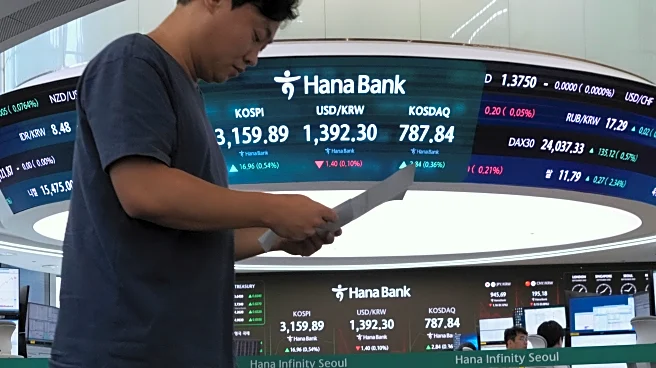What's Happening?
The 2025 Shanghai Cooperation Organization (SCO) Summit in Tianjin has introduced significant changes in global trade dynamics, particularly affecting Japanese equities. The summit emphasized a 10-year development strategy aimed at reducing reliance on U.S.-centric trade systems by promoting local currency settlements and alternative payment mechanisms. This move is seen as a response to the U.S. tariffs imposed under President Trump, including a 25% tariff on Indian goods and a 15% tariff on Japanese auto exports. Japan, although not a member of the SCO, is a key dialogue partner and faces both risks and opportunities from these developments. The summit's focus on Eurasian infrastructure and digital trade corridors could potentially diversify Japan's supply chains, especially as India and China plan to ease travel restrictions and boost rare earth imports.
Why It's Important?
The strategic realignment initiated by the SCO Summit could have profound implications for Japan's economic landscape. The U.S.-Japan trade agreement, which reduced auto tariffs, initially boosted the Nikkei 225 index. However, ongoing tariff pressures, particularly the 50% tariffs on steel and aluminum, continue to pose challenges. The summit's emphasis on de-dollarization and regional economic integration has prompted Japanese investors to hedge against U.S. policy risks. This shift could lead to a more multipolar trade order, affecting Japan's long-term economic strategies and its position in global markets. The resilience of the Nikkei 225 amidst these uncertainties reflects investor confidence in Japan's adaptability, but the broader geopolitical landscape remains a critical factor.
What's Next?
Japan faces the challenge of navigating these complex trade dynamics while balancing its relationships with both the U.S. and regional partners. The SCO's proposed development bank and infrastructure projects could offer new opportunities for collaboration, but also competition. Japan's strategic investments in Southeast Asia and participation in the RCEP trade pact may provide alternative pathways. The country's ability to adapt its trade strategies will be crucial in mitigating risks and capitalizing on emerging opportunities. Investors will need to weigh the short-term benefits of the U.S.-Japan trade deal against the long-term risks of geopolitical fragmentation.












